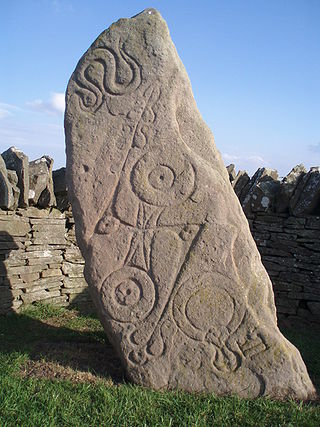
The Picts were a group of peoples who lived in Britain north of the Forth–Clyde isthmus in the Pre-Viking, Early Middle Ages. Where they lived and details of their culture can be inferred from early medieval texts and Pictish stones. The term Picti appears in written records as an exonym from the late third century AD, but was adopted as an endonym in the late seventh century during the Verturian hegemony. This lasted around 160 years until the succession of the Alpínid dynasty, when the Pictish kingdom merged with that of Dál Riata to form the Kingdom of Alba. The concept of "Pictish kingship" continued for a few decades until it was abandoned entirely as a contemporary signifier during the reign of Caustantín mac Áeda.

The Battle of Dun Nechtain or Battle of Nechtansmere was fought between the Picts, led by King Bridei Mac Bili, and the Northumbrians, led by King Ecgfrith, on 20 May 685.

Atholl or Athole is a large historical division in the Scottish Highlands, bordering Marr, Badenoch, Lochaber, Breadalbane, Strathearn, Perth, and Gowrie. Historically it was a Pictish kingdom, becoming one of the original provinces of the Kingdom of Alba before being incorporated into the sheriffdom and later county of Perthshire. Today it forms the northern part of Perth and Kinross, Scotland.
Talorgan son of Eanfrith was a King of the Picts from 653 to 657. As with his successors Gartnait son of Donuel and Drest son of Donuel, he reigned as a puppet king under the Northumbrian king Oswiu.

The Caledonians or the Caledonian Confederacy were a Brittonic-speaking (Celtic) tribal confederacy in what is now Scotland during the Iron Age and Roman eras. The Greek form of the tribal name gave rise to the name Caledonia for their territory. The Caledonians were considered to be a group of Britons, but later, after the Roman conquest of the southern half of Britain, the northern inhabitants were distinguished as Picts, thought to be a related people who would have also spoken a Brittonic language. The Caledonian Britons were thus enemies of the Roman Empire, which was the state then administering most of Great Britain as the Roman province of Britannia.
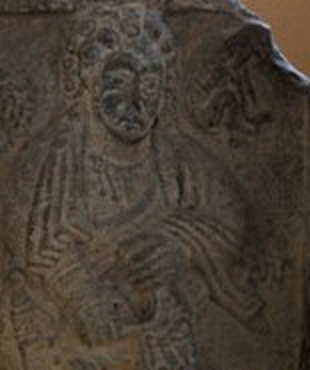
Óengus son of Fergus, was king of the Picts, of possible Gaelic origin, from 732 until his death in 761. His reign can be reconstructed in some detail from a variety of sources. The unprecedented territorial gains he made from coast to coast, and the legacy he left, mean Óengus can be considered the first king of what would become Scotland.
The Battle of Two Rivers was fought between the Picts and Northumbrians in the year 671. The exact battle site is unknown. It marked the end of the Pictish rebellion early in the reign of Ecgfrith, with a decisive victory for the Northumbrians. Attestation of the battle is limited to the account in Stephen of Ripon's Vita Sancti Wilfrithi.
Gartnait, son of Domelch, was a king of the Picts from 584 to 595.
Saint Ceolwulf was King of Northumbria from 729 until 737, except for a short period in 731 or 732 when he was deposed and quickly restored to power. Ceolwulf abdicated and entered the monastery at Lindisfarne. He was the "most glorious king" to whom Bede dedicated his Historia ecclesiastica gentis Anglorum.
Thomas Owen Clancy is an American academic and historian who specializes in medieval Celtic literature, especially that of Scotland. He did his undergraduate work at New York University, and his Ph.D at the University of Edinburgh. He is currently at the University of Glasgow, where he was appointed Professor of Celtic in 2005.
Drest son of Donuel was king of the Picts from c.663 until 672. Like his brother and predecessor Gartnait son of Donuel, and Gartnait's predecessor Talorgan son of Eanfrith, he reigned as a puppet king under the Northumbrian king Oswiu. Gartnait and Drest may have been sons of Domnall Brecc, who was king of Dál Riata from c.629 until he was killed in 642.
Talorg son of Uuid was a king of the Picts from 641 to 653.
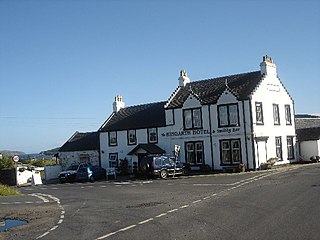
Kingarth is a historic village and parish on the Isle of Bute, off the coast of south-western Scotland. The village is within the parish of its own name, and is situated at the junction of the A844 and B881. In the Early Middle Ages it was the site of a monastery and bishopric and the cult centre of Saints Cathan and Bláán.
The Vita Sancti Niniani or simply Vita Niniani is a Latin language Christian hagiography written in northern England in the mid-12th century. Using two earlier Anglo-Latin sources, it was written by Ailred of Rievaulx seemingly at the request of a Bishop of Galloway. It is loosely based on the career of the early British churchman Uinniau or Finnian, whose name through textual misreadings was rendered "Ninian" by high medieval English and Anglo-Norman writers, subsequently producing a distinct cult. Saint Ninian was thus an "unhistorical doppelganger" of someone else. The Vita tells "Ninian's" life-story, and relates ten miracles, six during the saint's lifetime and four posthumous.
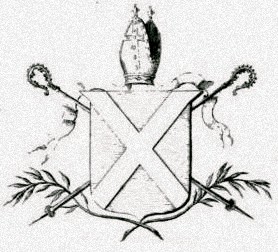
The Archdiocese of St Andrews was a territorial episcopal jurisdiction of the Catholic Church in early modern and medieval Scotland. It was the largest, most populous and wealthiest diocese of the medieval Scottish Catholic church, with territory in eastern Scotland stretching from Berwickshire and the Anglo-Scottish border to Aberdeenshire.
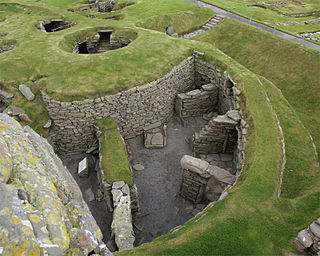
Prehistoric Shetland refers to the prehistoric period of the Shetland archipelago of Scotland, when it was first occupied by humans. The period prior to human settlement in Shetland is known as the geology of Scotland. Prehistory in Shetland does not end until the beginning of the Early Medieval Period in Scotland, around AD 600. More than 5,000 archaeological sites have been recorded in the Shetland Islands.

The Christianisation of Scotland was the process by which Christianity spread in what is now Scotland, which took place principally between the fifth and tenth centuries.
The Battle of Luith Feirn took place within the Pictish kingdom of Fortriu in 664. It is recorded in the Annals of Ulster as "Bellum Lutho Feirnn, .i. iFortrinn." meaning "The Battle of Luith Feirnn, i.e. in Fortriu.". This is the first explicit mention of Fortriu in contemporary Irish chronicles, though the cognate Verturiones had been mentioned by the Roman writer Ammianus Marcellinus in the late 4th century as one of the Pictish peoples participating in the Barbarian Conspiracy of 367–368.
The Battle of Strathyre took place in 654 near Balquhidder in the Scottish Highlands, between the forces of Talorgan son of Eanfrith of the Picts and Dúnchad mac Conaing of Dál Riata.
Gwid son of Peithan was a warband leader allied with the northern Britons fighting against the Angles of Northumbria in the early 7th century, recorded in the Welsh poem Y Gododdin. He is described in Y Gododdin as a "steadfast warrior" and may have been either a southern Pict or a northern British chief.








